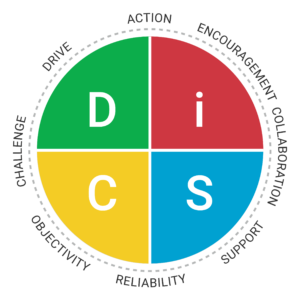In many organisations, becoming a manager is often seen as a natural next step, a reward for excelling in your role. But leading others isn’t just about experience or confidence. It’s about people. And that can be an entirely different skill set.
Some thrive on challenge and pace. Others value structure, collaboration, or support. What motivates one person might overwhelm another. And that’s why the best managers know: you can’t manage everyone the same way.
Understanding Different People and Preferences
Everyone brings different communication preferences, working styles, and motivations to the table. The most effective managers recognise this and learn to flex their approach depending on who they’re working with. Whether it’s how someone responds to pressure, how they like to receive feedback, or how they prefer to collaborate, these differences matter. For example:
- Some team members prefer direct, fast-paced conversations. Others want more time to reflect and appreciate a considered approach.
- Some want autonomy and room to run. Others feel most confident with regular check-ins and clear guidance.
Great managers don’t apply one fixed style to every situation, they make intentional choices based on the individual.

Tailoring Your Mindset as a Manager
Understanding your own preferences as a manager is just as important as understanding your team. The way you naturally communicate, motivate, or handle pressure might not match the preferences of the people you lead, and that’s where friction often begins.
The management mindsets you lean towards most easily are usually the ones that align with your own style. But your direct reports may need something different. Adapting your approach to match their needs doesn’t mean changing who you are; it means managing with greater awareness and intention.
Here are some ways different management styles can flex their approach:
🎯 Fast-paced, results-driven managers
- Slow down to listen actively and create space for others to contribute
- Avoid jumping to solutions before others feel heard
- Recognise that some team members value the process as much as the outcome
💬 Sociable, enthusiastic managers
- Pay attention to detail and follow-through, not just energy and enthusiasm
- Be mindful that not everyone is energised by group interaction
- Make space for quieter team members to contribute in their own way
🤝 Supportive, steady managers
- Push yourself to have difficult conversations rather than avoiding tension
- Challenge your team when needed, especially if they’re capable of more
- Remember that change isn’t always negative – it can be an opportunity
📊 Detail-focused, analytical managers
- Avoid overcomplicating tasks or overwhelming people with data
- Prioritise personal connection alongside logic and clarity
- Be willing to act even when things aren’t 100% perfect
Every management style brings value. The key is knowing when to stretch based on who you’re leading, and recognising that they may not need the same things you do.

8 Ways to Be a More Human Manager
Whether you’re managing a team of five or fifty, these principles create a foundation of trust and performance:
- Foster a Culture of Openness
People need to feel safe to speak up, whether it’s to share an idea, flag a problem, or admit a mistake. If you can create an environment where honesty is valued, feedback can be a two-way street, and listening leads to action, then this will encourage collaboration, create opportunities for connection. - Be Available & Offer Real Support
A good manager isn’t just a boss; they’re a support system. Keep your “door open”, listen when your team needs help, and provide the resources they need to perform at their best. That may be, flexible working, mental health days, additional training and support or just a space to vent. - Make Positivity & Inclusivity the Norm
A culture where people feel valued, seen, and safe to be themselves is a culture where people thrive. Be a Champion diversity, shut down negativity or exclusion, and be intentional about making your work a place people actually want to be. - Protect Work-Life Balance
When teams run on empty, they break! Encourage the right type of breaks, to reset and switch off, make sure they use their holidays, and set clear boundaries between work and life. Most importantly lead by example. If you don’t switch off, they won’t feel they can either. - Lead with Empathy
Your team are human beings, not just employees. Understand their challenges, strengths, and personal circumstances, and make decisions with that in mind. Empathy doesn’t mean lowering the bar, far from it, support people to meet it. - Champion Growth & Development
No one wants to feel stuck. Help your team grow by offering learning opportunities, mentoring, and a clear path for progression. Remember to recognise effort, celebrate progress, and be invested in their future. - Get Clear on Goals & Expectations
Ambiguity is the enemy of performance. Make sure your communication is clear and your team knows exactly what’s expected of them, why it matters, and how their work contributes to the bigger picture. With Clarity comes confidence. - Tackle Burnout Before It’s Too Late
No-one wears burnout as a badge of honour, so keep an eye out for the warning signs, low energy, disengagement, irritability and take action. Balancing workloads and adjusting ones expectations can really help to support, making sure it is also backed up with regular genuine check in’s.
Tools That Help Managers Lead with Confidence
If you want to better understand your team, tools for understanding people can be a great place to start. One that we use often is Everything DiSC Management, which helps managers:
- Understand their own leadership style
- Recognise how others prefer to communicate and work
- Learn how to flex their approach to get the best from different people
The Management DiSC model outlines four core styles:
D-style (Action, Drive, Challenge): Focused on results, speed, and achievement. They value autonomy, take-charge energy, and quick decision-making.
i-style (Action, Encouragement, Collaboration): Bring enthusiasm, optimism, and energy. Motivated by recognition and collaboration, they thrive in social, fast-paced environments.
S-style (Collaboration, Support, Reliability): Prioritise trust, consistency, and collaboration. They create stability through calm leadership and supportive relationships.
C-style (Challenge, Objectivity, Reliability): Value structure, accuracy, and analysis. They often prefer clear expectations and logical decision-making over emotion or speed.

Knowing where you sit on the DiSC map helps you recognise both your strengths and potential blind spots as a manager. More importantly, it gives you a framework to adapt your approach depending on who you’re managing.
By understanding what motivates your team and how they prefer to work, you can build stronger relationships, reduce conflict, and help everyone perform at their best.
Everything DiSC Management
You don’t need to change who you are to be a better manager. But by becoming more aware, more adaptable, and more human in your approach, you’ll create a space where people can thrive.
Want to learn more about Everything DiSC Management? Sign up to our showcase today.



